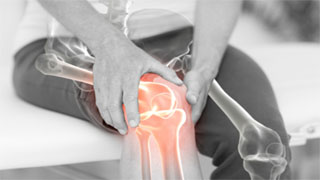
Fascial adhesion is caused by external forces or long-term strain, leading to hematoma, inflammation, etc., which affects muscle function and is prone to occur in bone and joint areas such as neck, shoulder, and vertebral body.
Symptoms include pain (dull or dull pain, which may worsen movement), restricted movement (limited range of joint movement, affecting muscle extension and contraction), muscle stiffness (affecting muscle elasticity, coordination, and power output), as well as muscle weakness, numbness, local redness and swelling, and functional impairment.
The superficial fascia is located between the dermis and deep fascia, distributed in the limbs, and has protective and muscle tension maintenance functions. To maintain its elasticity and softness, attention should be paid to maintaining appropriate weight, exercising reasonably, avoiding prolonged use of the same posture, keeping warm, massaging, and applying hot compress.
The deep fascia is composed of dense connective tissue that wraps around the body wall, muscles, etc. Its functions include wrapping around muscles, blood vessels and nerves, providing muscle attachment, developing sensory nerves, maintaining muscle tension and force transmission. Problems with the deep fascia can affect the tension of the superficial fascia.
Fascial adhesions hinder the smooth flow of qi and blood in tissues, leading to functional impairment. Muscle fascia aggregation sites are prone to adhesion, such as the head, face, neck, and shoulders. Prevention and treatment can be achieved by appropriate exercise, strengthening exercise, and keeping warm.
Skeletal movement relies on soft tissue to drive, and during movement, soft tissue can easily cause fascial tissue to squeeze or groove, forming adhesion points, leading to dynamic imbalance, deformation, and new adhesion of soft tissue, causing large-scale adhesion, hardening, and atrophy, affecting the stress on bones, causing bone diseases, and leading to various diseases.
In the early stage of adhesion, there are often no symptoms, but the fascia has a memory storage function, and minor injuries and pain can accumulate and cause subsequent problems.
When peeling off adhesive tissue, it can be seen that it is twisted and deformed. These dormant tissues are bound by fascial pressure and tension. Massage is a good choice as it can open up the tissue, unblock qi and blood, and has no side effects.
The massage technique requires a balance of softness and rigidity, differentiation of tissues, and penetration of force. The intensity should be determined based on the specific location of the disease.
The basic steps for releasing fascial adhesions:
1. Release the superficial fascia
-Organizational stiffness type: gradually becomes soft and lively after treatment.
-Individuals with overall tightness: After treatment, some hardened tissue is exposed, which can be restored with further treatment.
-Techniques: Push and caress method, palm massage method, and stirring method.
2. Release the middle fascia
-After shallow release, the middle fascia tissue becomes loose and the tendons can be felt.
-Techniques: elbow movement technique, iron finger eagle claw technique.
Fascial chain release techniques include plantar fascia, posterior calf, hip relaxation, lateral and medial thigh, anterior calf on the other side, upper back release, as well as sun flag release technique. The process of release includes observing the source of pain, touching the surface, pushing deeper layers, and pressing key points.
The treatment also includes using foam axis and balls to relax muscles, focusing on posture and exercise, and warming up and relaxing before and after exercise.


